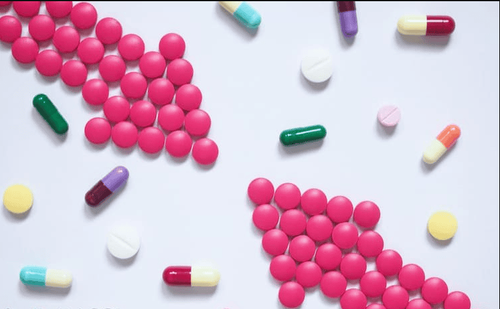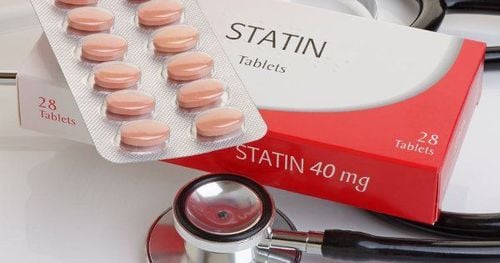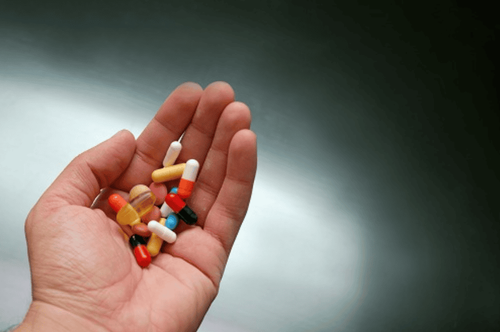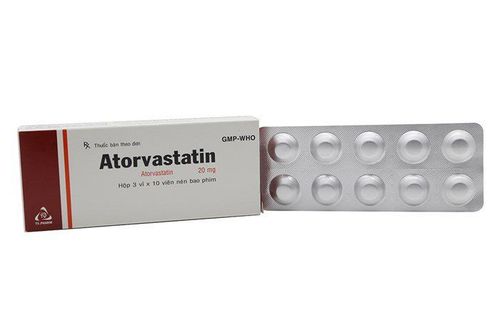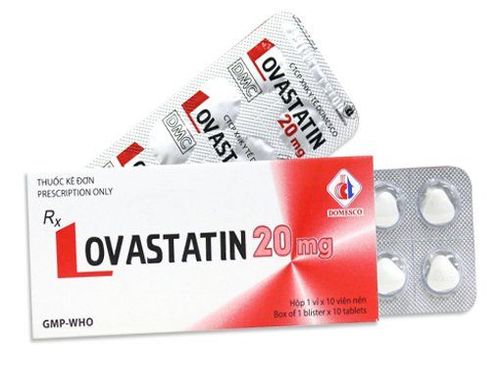This is an automatically translated article.
Lipistad 10 is a drug commonly used in clinical practice for many patients. So what is Lipistad 10 drug, how to use it and how to use it?
1. What disease does Lipistad 10 treat?
Lipistad 10 is a lipid-lowering drug, produced in the form of film-coated tablets, the main ingredient in each tablet is 10mg Atorvastatin in the form of Atorvastatin calcium. Atorvastatin has the effect of lowering total cholesterol, lowering LDL-cholesterol, apolipoprotein B and reducing triglycerides, and increasing HDL-cholesterol.Lipistad 10mg drug is indicated in the following cases:
Patients with primary hypercholesterolemia Patients with beta-lipoprotein disorder who do not respond adequately to diet. Patients with homozygous familial hypercholesterolaemia when diet is not effective. Lipistad 10mg is contraindicated in the following cases:
People who are sensitive to HMG-CoA reductase inhibitors. Patients with advanced liver disease or persistently elevated serum transaminases of unknown cause. Pregnant and lactating women. Notes and precautions when using Lipistad 10mg:
Before treatment with Lipistad 10mg, you need to pay attention to exclude the causes of secondary dyslipidemia and need to test the lipid index, should conduct the test. periodic inspection, with an interval of not less than 4 weeks. During treatment with Lipistad 10, if creatine kinase levels increase, myositis occurs, or serum liver enzymes are elevated 3 times the upper limit of normal, the dose should be reduced or treatment discontinued. Use Lipistad 10mg with caution in patients with liver dysfunction, patients who drink a lot of alcohol. You have a reasonable diet before using the drug, and should maintain this diet throughout the course of treatment with the drug.
2. Dosage and how to use Lipistad 10mg
Lipistad 10mg drug is used orally, and can be taken at any time of the day, regardless of the meal.
Dosage of Lipistad 10mg drug should be according to the doctor's prescription, the reference dose for specific cases is as follows:
Treatment of heterozygous and non-familial hypercholesterolemia and treatment of disorders Mixed dyslipidemia: The recommended starting dose is 10-20mg once a day. For patients who need to reduce their LDL cholesterol significantly (over 45%) can start using Lipistad 10mg at a dose of 40mg, once a day. The maximum dose is 80mg once daily. After starting treatment and/or after increasing the dose of Lipistad 10mg, you should have your lipid levels assessed within 2 to 4 weeks and the dose adjusted accordingly. Treatment of homozygous familial hypercholesterolemia: Use a dose of 10-80 mg/day and should be combined with other lipid-lowering measures. Lipistad 10mg can be used in combination with resin to increase the effectiveness of treatment.
3. Side effects of Lipistad 10mg
Lipistad 10mg is generally well tolerated, side effects are usually mild and transient. Possible side effects after taking Lipistad 10mg such as:
Constipation, flatulence, indigestion, abdominal pain. Nausea, vomiting Headache, dizziness.
4. Lipistad 10mg drug interactions with other drugs
When using anticoagulants, indandione in combination with Lipistad 10mg will increase bleeding time or prothrombin time. It is necessary to monitor prothrombin time in patients using Lipistad 10 in combination with anticoagulants
Cyclosporine, erythromycin, gemfibrozil, immunosuppressants, niacin when used in combination with Lipistad 10mg cause an increased risk of risk. myopathy.
Co-administration of Digoxin with Lipistad 10mg causes a slight increase in serum digoxin concentrations.
Hopefully with the sharing of Lipistad 10 drug, it will help you know how to use and understand the mechanism, how the drug works for the best health.
Please dial HOTLINE for more information or register for an appointment HERE. Download MyVinmec app to make appointments faster and to manage your bookings easily.




